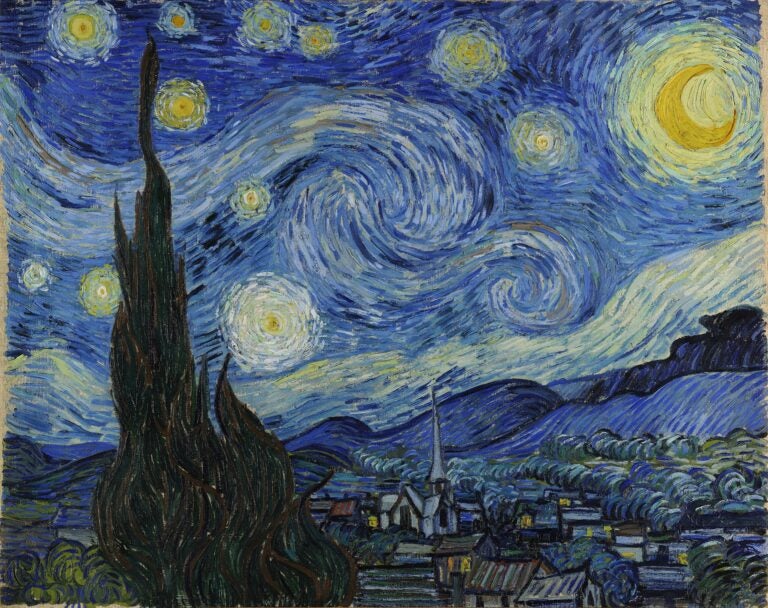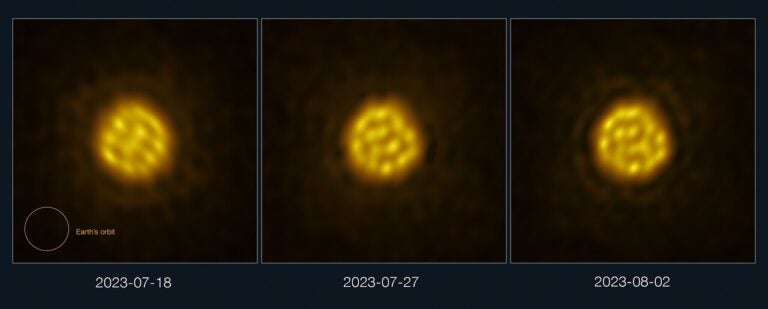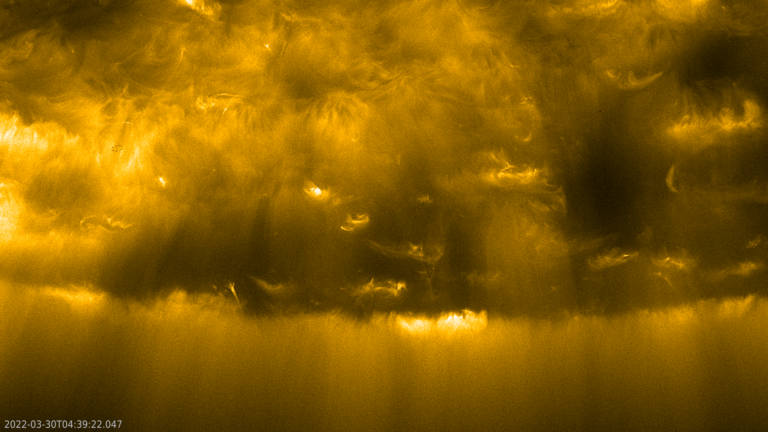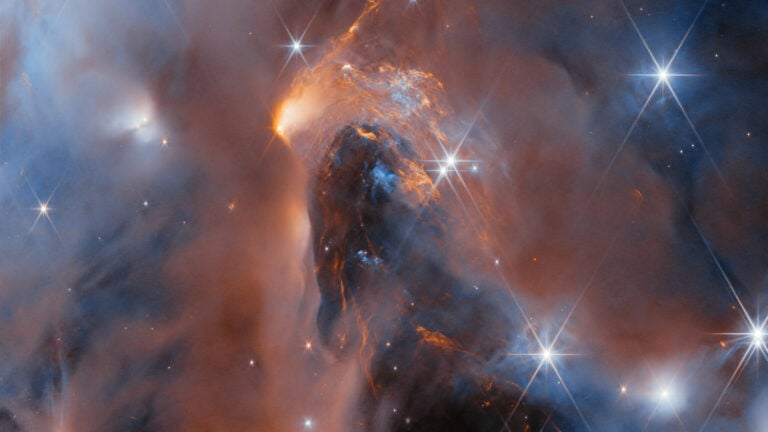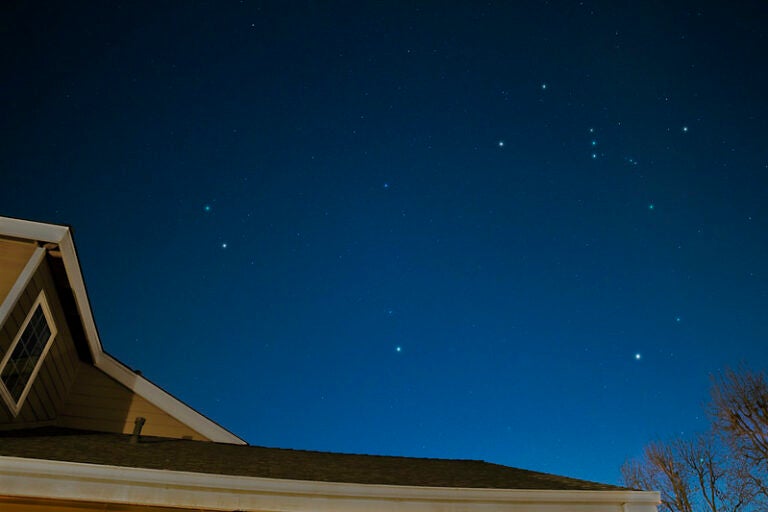Q: What happens to stars once they die and cool down completely? Is the end result different for neutron stars, pulsars, and white dwarfs?
Rich Livitski
Seal Beach, California
A: The discovery of nuclear fusion processes last century was the seed for a detailed picture of the evolution of a star from a protostellar gas cloud through extinction as a white dwarf or death in a supernova. A star’s mass largely determines its fate; chemical composition plays a smaller role.
Stars with mass similar to the Sun will end up as white dwarfs — cores of carbon and oxygen with hydrogen- or helium-dominated atmospheres — after their outer layers of gas are lost as stellar superwinds. Ultraviolet radiation from the white dwarf ionizes the ejected gas, forming a planetary nebula. The white dwarf core can burn no additional fuel, and it gradually cools until it no longer emits heat or electromagnetic radiation in the visible spectrum. This stellar remnant is called a black dwarf. No black dwarf has been detected yet, as the cooling time that a white dwarf needs to reach this state is longer than the age of the universe. Stars of a few solar masses also end their life cycles as white dwarfs; however, these objects have a mixture of carbon, oxygen, neon, and magnesium in their cores.
In the final moments of stars more than eight times our Sun’s mass, the outer layers fall in at a tenth of the speed of light, bounce off the rigid core, and are ejected in an intense supernova explosion. The core of the star, which contains traces of heavier elements such as iron, is either left as a neutron star or implodes as a black hole. A white dwarf in a binary system can also explode as a supernova, leaving no remnant and expelling iron and other heavier elements generated during the explosion into interstellar space.
Research Associate, Department of Astronomy,
University of Virginia, Charlottesville

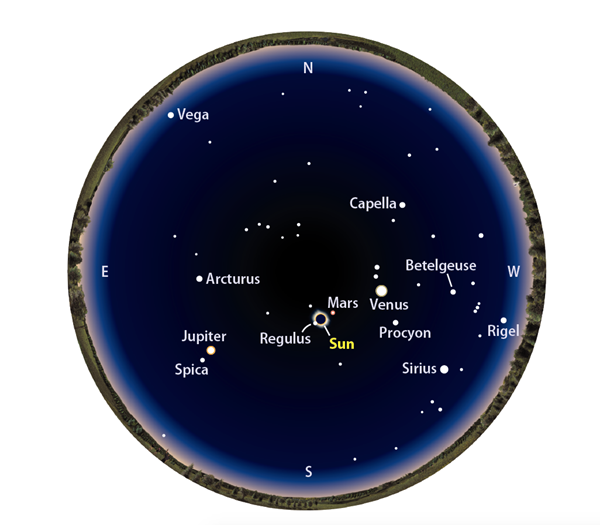

![Albireo (Beta [β] Cygni) is a classic example of a double star with contrasting colors.](https://www.astronomy.com/uploads/2024/08/Albireo.jpg)
